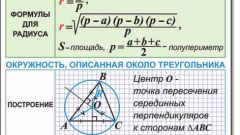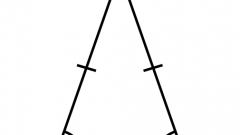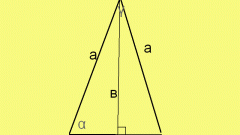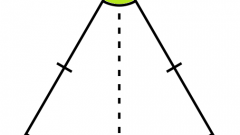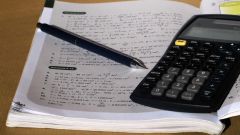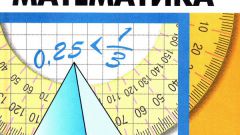Instruction
1
Heron's formula is a real godsend when solving math problems because it helps to find the area of any arbitrary triangle (also degenerate), if known to him. This ancient Greek mathematician was interested in a triangular shape only with integer dimensions, the area of which is also an integer, but it does not prevent today's scientists, as well as pupils and students to use it for any other.
2
In order to use the formula, you need to know another numerical characteristic – the perimeter, or rather, properiter triangle. It is equal to the sum of the lengths of all its sides. This is required in order to somewhat simplify the expression that is rather cumbersome:
S = 1/4•√((AB + VS + AC)•(BC + AC - AB)•(AB + AC - BC)•(AB + BC - AC))
R = (AB+VS+AC)/2 properiter;
S = √(p•(p - AB)•(p - BC)•(p - AC)).
S = 1/4•√((AB + VS + AC)•(BC + AC - AB)•(AB + AC - BC)•(AB + BC - AC))
R = (AB+VS+AC)/2 properiter;
S = √(p•(p - AB)•(p - BC)•(p - AC)).
3
The equality of all sides of the triangle, which in this case is correct, the formula transforms in a simple expression:
S = √3•A2/4.
S = √3•A2/4.
4
An isosceles triangle has the same length of two of the three sides AB = BC and, accordingly, the adjacent corners. Then Heron's formula is converted to the following expression:
S = 1/2•AC•√((AB + 1/2•AC)•(AC – 1/2•AB)) = 1/2•AC•√(AB2 – 1/4•AC2), where AC is the length of the third side.
S = 1/2•AC•√((AB + 1/2•AC)•(AC – 1/2•AB)) = 1/2•AC•√(AB2 – 1/4•AC2), where AC is the length of the third side.
5
To determine the area of a triangle the three sides can not only help Heron. For example, suppose that triangle inscribed circle of radius r. This means that it applies to all sides whose lengths are known. Then the area of a triangle can be found by the formula, is also associated with pauperisation and is a simple product of its radius of inscribed circle:
S = 1/2•(AB + VS + AC) = R•r.
S = 1/2•(AB + VS + AC) = R•r.
6
An example of the application of the formula of Heron: let's consider a given triangle with sides a=5; b=7 and C=10. Find the area.
7
The decision
Calculate properiter:
R = (5 + 7 + 10) = 11.
Calculate properiter:
R = (5 + 7 + 10) = 11.
8
Calculate the required value:
S = √(11•(11-5)•(11-7)•(11-10)) ≈ 16,2.
S = √(11•(11-5)•(11-7)•(11-10)) ≈ 16,2.

